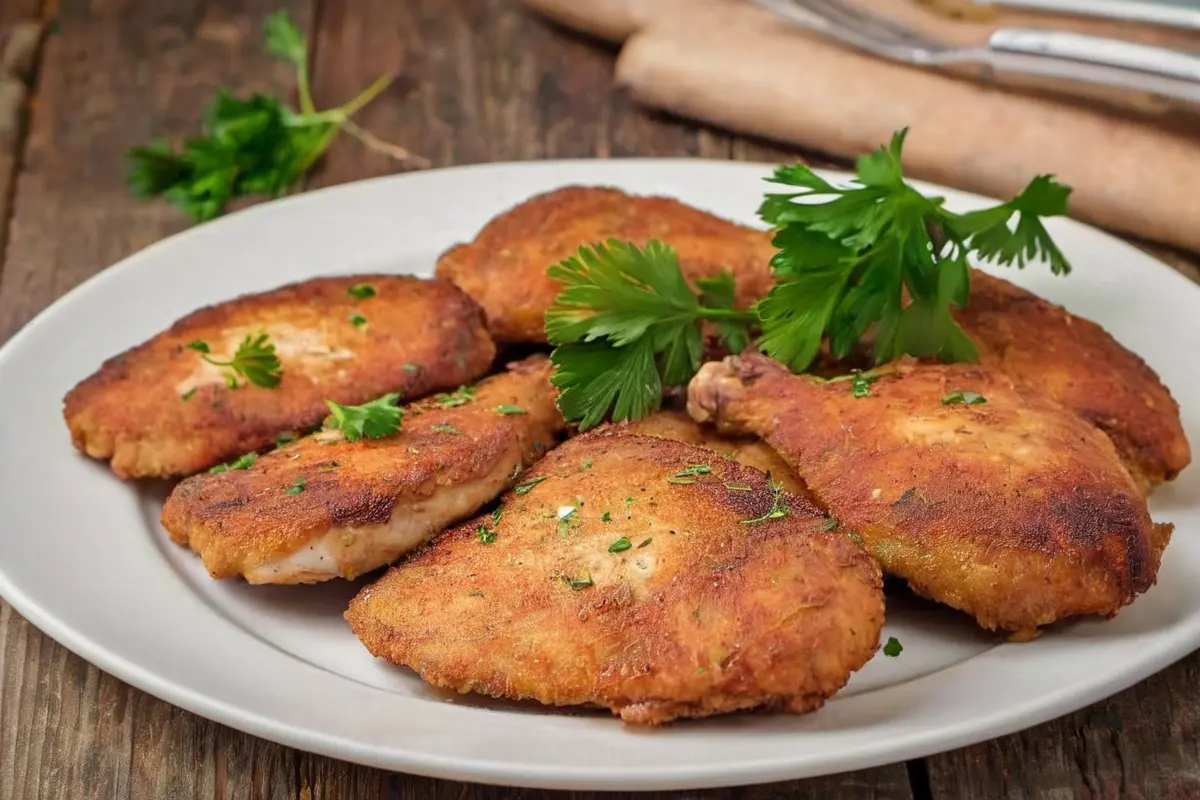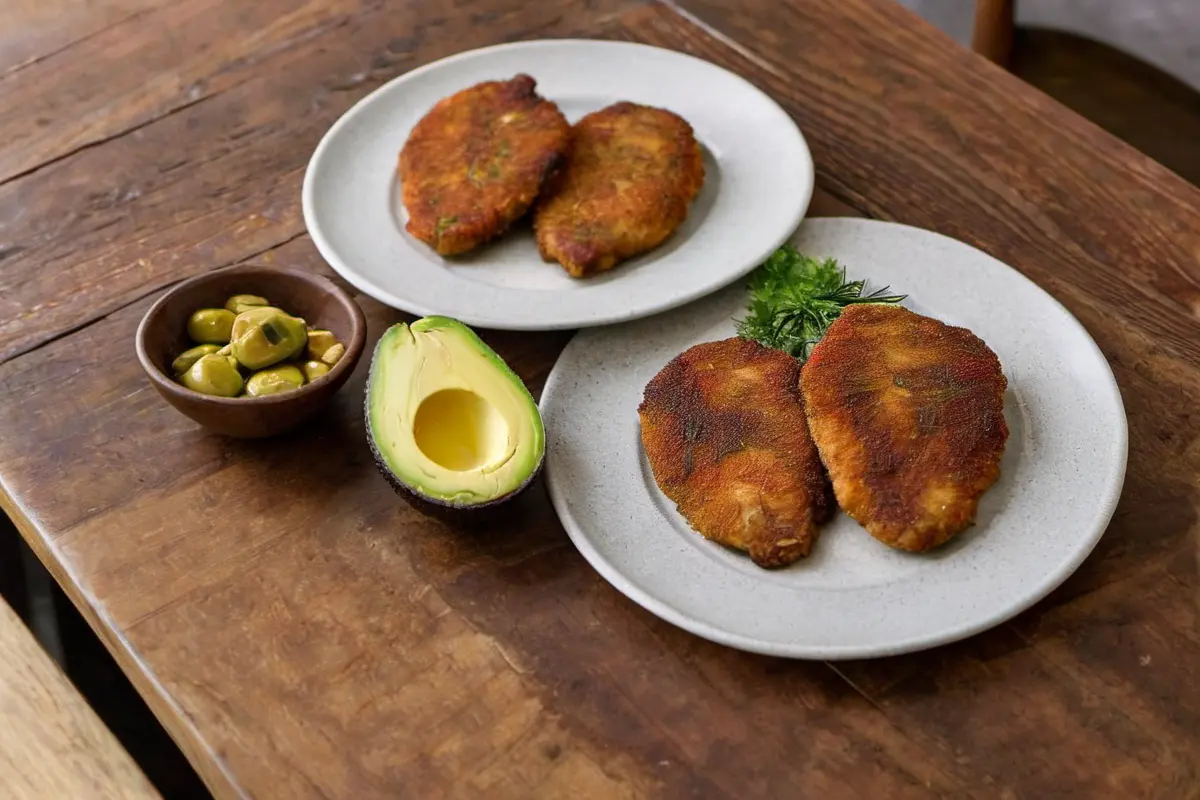Comparative Analysis
Flavor Profiles of Each Oil
When frying chicken cutlets, the oil you choose can significantly influence the final taste. Olive oil is renowned for its rich, slightly fruity flavor, which can add a Mediterranean touch to dishes. It enhances the chicken’s natural flavors without overwhelming them, making the cutlets not only tastier but also more aromatic.
Canola oil, being more neutral, doesn’t impart much flavor, which can be ideal for those who prefer their spices and seasonings to take center stage. On the other hand, avocado oil offers a subtle, buttery taste that complements the chicken beautifully, adding a hint of richness that doesn’t dominate the palate.
Textural Differences in Fried Cutlets
Texture is paramount in fried foods, and the choice of oil plays a crucial role here. Olive oil tends to create a crispy exterior while maintaining a juicy interior, provided it’s not overheated. Avocado oil, with its higher smoke point, is excellent for achieving an even, golden crust without the risk of burning, which is especially useful for those less experienced with frying.
Canola oil, while effective in creating a crispy texture, sometimes lacks the same depth of crunch that olive or avocado oils can achieve. This difference might be subtle but can be a deciding factor for texture aficionados looking for that perfect bite.
Nutritional Comparison
From a nutritional standpoint, each oil offers distinct benefits. Olive oil is packed with antioxidants and anti-inflammatory properties, making it a heart-healthy choice. Avocado oil is similarly beneficial, with high levels of monounsaturated fats and vitamins that help absorb other nutrients more effectively.
Canola oil, while not as nutrient-dense as olive or avocado oil, still provides essential fatty acids that are important for overall health. However, the refining process can reduce the presence of these beneficial elements.
In sum, the decision on what oil to use for frying chicken cutlets doesn’t just affect taste and texture but also impacts health. Understanding these nuances helps in making an informed choice that aligns with both culinary preferences and dietary needs. As we move into discussing the opinions of culinary experts and the findings of scientific studies, we’ll gain even deeper insights into the best practices for frying chicken cutlets.
Expert Opinions and Studies
Insights from Culinary Experts
Many chefs emphasize the importance of choosing the right oil based on the dish’s desired flavor profile and cooking method. Culinary experts often advocate for olive oil due to its ability to add a nuanced flavor to dishes like chicken cutlets. They note that while olive oil has a lower smoke point than some alternatives, its flavor and health benefits make it a preferred choice for medium-temperature frying.
Experts also highlight avocado oil as a versatile oil that can handle high heat, making it ideal for frying at temperatures that olive oil may not withstand. This adaptability is praised in professional kitchens where consistent results at high temperatures are crucial.
Scientific Studies on Oils and Frying
Research supports the use of olive oil in cooking, pointing out its stability under heat and its lessened likelihood of forming harmful compounds compared to more processed oils. Studies have shown that olive oil can maintain its nutritional profile even when heated, contradicting the myth that it becomes harmful when used for frying.
Additionally, scientific literature discusses the benefits of avocado oil, including its high levels of antioxidants and its ability to remain stable at high temperatures. This makes it a safe and healthy choice for frying, as noted in studies published in reputable journals.
Conversely, while canola oil is often recognized for its neutral flavor and high smoke point, research funded by the industry may exaggerate its benefits. Independent studies suggest that the refining process can diminish some of the oil’s nutritional value, making it a less optimal choice for health-conscious consumers.
As we dissect these expert opinions and research findings, it becomes evident that the choice of oil not only impacts the culinary outcome but also affects health in significant ways. With these expert insights and scientific backing, the decision on which oil to use for frying chicken cutlets becomes clearer, providing a foundation for making informed dietary choices.
Conclusion
Summary of Findings
Throughout our exploration, we’ve established that olive oil is not only acceptable but also beneficial for frying chicken cutlets. It provides a desirable flavor, significant health benefits, and a satisfactory cooking performance when used within its appropriate temperature range. Avocado oil emerges as a strong contender, especially for those seeking higher temperature cooking without sacrificing health benefits. Canola oil, while practical for its high smoke point and neutral flavor, falls short in nutritional value compared to its counterparts.
Best Practices for Frying Chicken
When frying chicken cutlets, or any food, selecting the right oil is crucial. Here are some best practices to consider:
- Always monitor the temperature to ensure the oil does not exceed its smoke point.
- Choose oils like olive or avocado for their health benefits and ability to enhance the food’s flavor.
- Consider the flavor profile you desire in your dish when selecting an oil, as each type can impart different tastes and textures.
In conclusion, whether you choose olive oil, avocado oil, or even canola oil, the key is to use them wisely and within their cooking limits. Understanding the properties and benefits of each oil can help you make an informed decision that suits your culinary needs and health preferences. To complement your perfectly fried chicken cutlets, discover some top side dishes in What Goes Well with Chicken Cutlets, ensuring delicious, healthy results in your culinary endeavors.
With the insights gained from expert opinions, scientific studies, and practical cooking advice, home cooks and professional chefs alike can confidently navigate the choices in cooking oils, ensuring delicious, healthy results in their frying endeavors. Next, we will address some of the most common questions about frying chicken cutlets in olive oil to further clarify any remaining doubts.
FAQs
Is it safe to fry with olive oil?
Yes, it is safe to fry with olive oil. Contrary to common misconceptions, olive oil is quite stable at high temperatures within its smoke point, which typically ranges between 375°F and 400°F. This makes it suitable for frying foods like chicken cutlets, as long as the oil is not overheated. Olive oil also retains much of its nutritional value even when used for frying, making it a healthier choice compared to more processed oils. For more details on the proven health benefits of olive oil, visit Healthline’s coverage.
What oil do chefs recommend for frying chicken?
Chefs often recommend using oils with a high smoke point and favorable health profile for frying chicken. Olive oil is a popular choice among chefs who prioritize flavor and health, although many also suggest avocado oil for its higher smoke point and neutral flavor. Canola oil is another common recommendation for its affordability and high smoke point, though it does not offer the same health benefits as olive or avocado oil.
Can olive oil become toxic when heated?
No, olive oil does not become toxic when heated within its smoke point. While any oil can start to degrade and produce harmful compounds if overheated, olive oil is less likely to reach these harmful levels under normal cooking conditions due to its relatively high smoke point and stability. It’s important to monitor the temperature to ensure it remains within a safe range for cooking.
These frequently asked questions highlight the practical considerations and reassure the suitability of using olive oil for frying chicken cutlets. With this knowledge, home cooks can feel more confident in their choice of cooking oil, balancing health, flavor, and cooking performance. As we wrap up our discussion, let’s summarize the key points and provide some final thoughts on choosing the best oil for frying chicken cutlets.


